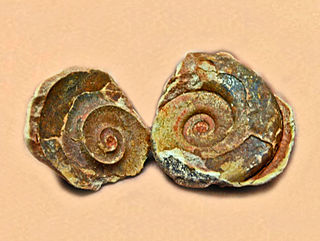
Hyatt Hotels Corporation, commonly known as Hyatt Hotels & Resorts, is an American multinational hospitality company headquartered in the Riverside Plaza area of Chicago that manages and franchises luxury and business hotels, resorts, and vacation properties. Hyatt Hotels & Resorts is one of the businesses managed by the Pritzker family.

The Batrachia are a clade of amphibians that includes frogs and salamanders, but not caecilians nor the extinct allocaudates. The name Batrachia was first used by French zoologist Pierre André Latreille in 1800 to refer to frogs, but has more recently been defined in a phylogenetic sense as a node-based taxon that includes the last common ancestor of frogs and salamanders and all of its descendants. The idea that frogs and salamanders are more closely related to each other than either is to caecilians is strongly supported by morphological and molecular evidence, they are for instance the only vertebrates able to raise and lower their eyes, but an alternative hypothesis exists in which salamanders and caecilians are each other's closest relatives as part of a clade called the Procera, with frogs positioned as the sister taxon of this group.
The International Ornithologists' Union, formerly known as the International Ornithological Committee, is a group of about 200 international ornithologists, and is responsible for the International Ornithological Congress and other international ornithological activities, undertaken by its standing committees.

The Siberian elm cultivar Ulmus pumila 'Pinnato-ramosa' was raised by Georg Dieck, as Ulmus pinnato-ramosa, at the National Arboretum, Zöschen, Germany, from seed collected for him circa 1890 in the Ili valley, Turkestan by the lawyer and amateur naturalist Vladislav E. Niedzwiecki while in exile there. Litvinov (1908) treated it as a variety of Siberian elm, U. pumilavar.arborea but this taxon was ultimately rejected by Green, who sank the tree as a cultivar: "in modern terms, it does not warrant recognition at this rank but is a variant of U. pumila maintained and known only in cultivation, and therefore best treated as a cultivar". Herbarium specimens confirm that trees in cultivation in the 20th century as U. pumilaL. var. arboreaLitv. were no different from 'Pinnato-ramosa'.

Parahoplitidae is an extinct family of Cretaceous ammonites with stoutly ribbed, compressed, generally involute shells lacking or with only minor tubercles included in the Deshayestoidea, a superfamily now separated from the Hoplitacaceae.

Xenodiscoidea, formerly Xenodiscaceae, is a superfamily within the ammonoid order Ceratitida. The superfamily was named by Frech in 1902, presently contains ten families, only one of which was included in the original Otocerataceae of Hyatt, 1900, the remaining having been added.
Paraceltitidae is a family of Middle and Upper Permian cephalopods, that comprise the earliest of the Ceratitida. Paraceltitidids have variably ribbed, discoidally evolute shells with compressed elliptical whorl sections and simple suture lines. Their origin is most likely in the Daraelitidae of the Prolecanitida and they are the apparent source of the Xenodiscidae. All together they lived for some 12 million years, from about 270.6 to about 258 million years ago.
Ancyloceratoidea, formerly Ancylocerataceae, is a superfamily of typically uncoiled and loosely coiled heteromorph ammonoids established by Alpheus Hyatt in 1900, that may contain as many as 11 families, depending on the classification accepted.

Collignoniceratidae is a family of Upper Cretaceous ammonites characterized by typically more or less evolute shells with compressed, oval, or square whorl sections; serrate or entire keels; and dense ribs with one to 5 tubercles.

Eutrephoceras is an extinct genus of nautilus from the Late Jurassic to the Miocene. They are characterized by a highly rounded involute shell with slightly sinuous suture patterns.

Lytoceratidae is a taxonomic family of ammonoid cephalopods belonging to the suborder Lytoceratina, characterized by very evolute shells that generally enlarge rapidly, having whorls in contact but mostly overlapping very sightly, or not at all.

Neocomitidae is a family of Lower Cretaceous ammonitids comprising genera with strongly ribbed evolute to smooth, fairly involute shells.

The family Dactylioceratidae comprises Early Jurassic ammonite genera with ribbed and commonly tuberculate shells that resembled later Middle Jurassic stephanoceratids and Upper Jurassic perisphinctids. Shells may be either evolute or involute.

Kossmaticeratidae is an extinct ammonoid family belonging to the order Ammonitida.

The Acanthoceratinae comprise a subfamily of ammonoid cephalopods that lived during the Late Cretaceous from the latter early Cenomanian to the late Turonian
Neocardioceras is a genus of evolute acanthoceratid ammonites from the uppermost Cenomanian, Upper Cretaceous, of Europe, western U.S. and Brazil.

Scalarites is a genus of heteromorph ammonites included in the family Diplomoceratidae. These fast-moving nektonic carnivores lived in the Cretaceous period, from 89.3 to 70.6 million years ago). These fossils have been found in Antarctica, Brazil, Denmark, Germany, Japan, Russia, Sweden and United States.

The elm cultivar Ulmus 'Fastigiata Glabra' was distributed by the Späth nursery, Berlin, in the 1890s and early 1900s as U. montana fastigiata glabra. Späth used U. montana both for cultivars of wych elm and for those of some U. × hollandica hybrids like 'Dampieri'. A specimen of U. montana fastigiata glabra in the Royal Botanic Garden Edinburgh was determined by Melville in 1958 as a hybrid of the U. × hollandica group.
The elm cultivar Ulmus 'Turkestanica' was first described by Regel as U. turkestanica in Dieck, Hauptcat. Baumschul. Zöschen (1883) and in Gartenflora (1884). Regel himself stressed that "U. turkestanica was only a preliminary name given by me; I regard this as a form of U. suberosa" [:U. minor ]. Litvinov considered U. turkestanicaRegel a variety of his U. densa, adding that its fruits were "like those of U. foliaceaGilibert" [:U. minor].

The subfamily Dactylioceratinae comprises early Jurassic ammonite genera that lived during Upper Pliensbachian to Upper Toarcian stage. These dactylioceratids existed from Margaritatus ammonite Zone, when they have evolved from Reynesocoeloceratinae and died out in Variabilis Zone without leaving any descendants.















